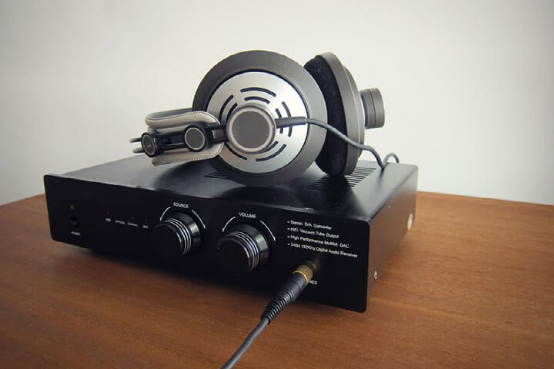
In the previous article where Little Lion discussed the selection of external sound cards, some friends in the comments mentioned that many DAC headphone amplifiers are actually excellent external sound cards that work perfectly with computers for audio playback. This headphone amplifier is commonly referred to as such; however, it should more accurately be called a DAC decoder, which stands for Digital-to-Analog Converter. If you’re into headphones, you really can’t do without it!
What Is a DAC?
A DAC (Digital-to-Analog Converter) is a technical tool that converts digital audio signals (binary code) into the analog waveform signals that you can hear.
So, when does the actual conversion from digital to analog happen? It occurs at the instant before the music file is played.
Before the music reaches your ears, the DAC processes all the binary code that makes up the digital audio signal and converts it into an analog signal. This signal is then sent to an amplifier and subsequently to your headphones or speakers.
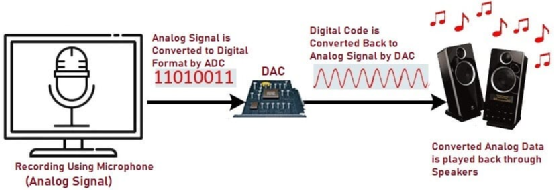
DACs are typically integrated into many devices, such as smartphones, tablets, and computers (sound cards). However, they can also be used as external standalone devices connected to audio equipment.
Why do we convert analog signals to digital signals just to convert them back again? To understand this, you first need to grasp the difference between analog and digital signals.
Analog signals are continuous waves where the amplitude or voltage changes continuously. When plotted on a graph, an analog signal resembles a smooth, continuous sine wave, identical to the wave produced by the original sound. Therefore, analog recordings can provide the most accurate sound reproduction.
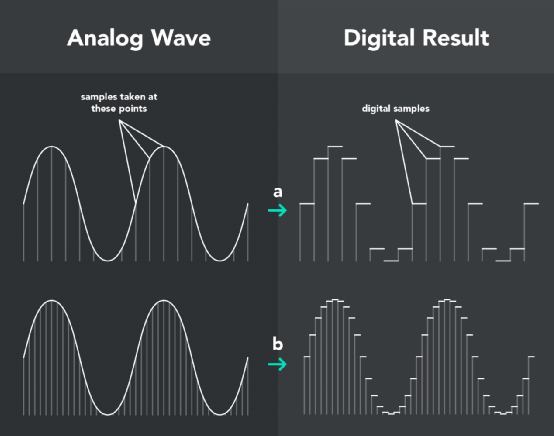
The difference between analog signals (left) and digital signals
In contrast, digital signals are binary waveforms. They are approximations of the original analog sound waves, and their amplitudes are limited to a specific number of values. These signals are represented by discrete square waves, making digital sound waves appear less smooth when plotted. Additionally, because they are approximations, digital signals often mask the more subtle nuances in audio, making them sound less accurate.
Returning to the initial question—if analog signals are already so accurate and digital signals are merely ‘approximations’, why convert them to digital signals in the first place? Why have digital signal music and audio replaced the traditional analog signals of tapes and records?
There are many reasons, mostly related to convenience. The primary reasons include:
Digital signals are easier, faster to transmit, compress, and store.
Digital signals are less susceptible to noise, distortion, and other degrading factors.
There are more devices available for processing digital signals.
Editing and post-processing digital signals is easier.
How Does a DAC Work?
As mentioned earlier, a DAC converts digital signals into analog signals. It does this by processing the binary information of the digital signal using either the weighted resistor method or the R-2R ladder network method. Of course, both of these working principles involve fairly complex mathematical principles and signal processing theories, which we will skip over for now.
In simple terms, a DAC requires multiple samples of the digital signal to reconstruct the analog waveform signal. However, since the digital signal consists of approximations of the original analog sound wave, you ultimately end up with a jagged stepped waveform rather than a typical smooth analog sine wave.
The size of each ‘step’ in this digital stepped waveform depends on the resolution of the DAC. The higher the resolution of the DAC, the smaller the ‘steps’. Smaller ‘steps’ mean a more accurate signal reconstruction, as it closely resembles the original analog wave.
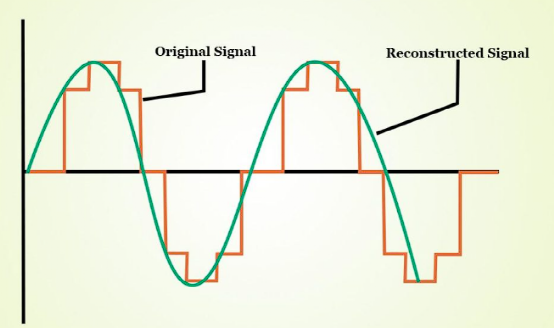
The original analog signal versus the reconstructed analog signal
This is where the interpolation filters or smoothing low-pass filters in the DAC come into play. It is the final step in digital-to-analog conversion, further improving the reconstructed analog wave.
During this process, the DAC circuit analyzes the gaps between each ‘step’ to determine their approximations. This process eliminates abrupt changes in each ‘step’, effectively reducing unwanted frequency points and producing a smooth, continuous analog wave.
Are DACs and DSP the Same Thing?
Digital Signal Processors (DSP) frequently appear in product descriptions and discussions about DACs. For example, “The XX DAC headphone amplifier is equipped with the latest DSP from XX, providing excellent sound quality performance.” However, they are not the same thing.
DSP does not convert signals from analog to digital, or vice versa. DSP only processes digital signals to perform built-in fast mathematical function algorithms to handle digital audio data, rather than converting this data into analog signals.
These processing functions include encoding and decoding MP3 or other digital audio file formats, speech recognition, active noise cancellation processing, audio effect enhancement (bass enhancement, surround sound, etc.)…
What Are the Benefits of an Independent DAC?
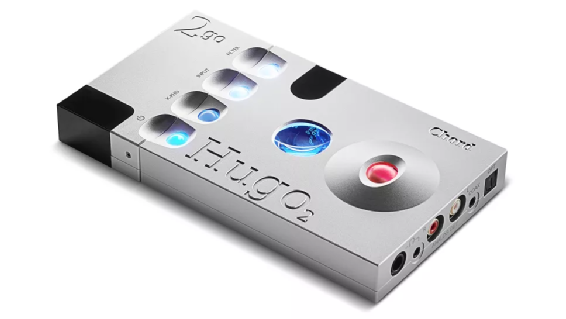
Since there is already a DAC circuit on the sound card, why is it better for audiophiles to purchase a standalone DAC (headphone amplifier) with amplification capabilities?
There are many reasons. First, commercially available standalone DACs generally use DAC circuits with higher precision, enabling higher resolution analog signal reproduction, making them more suitable for listening to high-fidelity and lossless digital audio sources.
Second, standalone DACs typically come with better signal amplification circuits and independent headphone amplifier chips, capable of driving more devices. In contrast, sound cards often have limited native output power and cannot drive high-end passive headphones and speakers.
Third, standalone DACs often have more comprehensive interfaces, typically integrating 3.5mm, Type-C, USB, 4.4mm (balanced), coaxial optical, multi-channel separation ports, etc.
Fourth, standalone DACs often support more hardware decoding and sound post-processing for various encoding formats, mainly because they can accommodate more DSP circuits, such as supporting virtual channels like 5.1 and 7.1 and environmental sound processing.
Fifth, standalone DACs often come with more comprehensive equalization and gain adjustments.
Conclusion: Whether to Invest in a DAC Depends on Your Listening Needs
An external standalone DAC will not automatically provide excellent audio. You also need equally good headphones, a good amplifier (which is often integrated with DAC products now), and high-quality audio sources. You must also ensure that the DAC has the necessary encoding and decoding specifications to handle high-resolution audio.
If you want to listen to more high-resolution lossless audio format-related sources and have just purchased new high-quality headphones, then investing in an external DAC can be worthwhile.
·END·
Editor: Xiang Hanqiu